Updated September 17, 2015
I started an experiment back in December by pre-germinating different coffee seeds from the same producer (K’Ho Coffee in Vietnam). One set of seeds were fully wet-processed on site and are essentially un-roasted coffee beans. The second set of seeds started as freshly picked cherries hand-pulped on site then immediately placed in activated charcoal for the trip home.
The first set of seeds (the un-roasted beans) was picked weeks before pre-germination The second set of seeds was picked seven days before pre-germination.
I pre-germinated both sets of seeds the same way; by soaking them in water for 24 hours. I washed the fresh seeds before starting the soak, just to remove most of the activated charcoal.
A pre-soak helps because: “Imbibition refers to the process by which dry seeds absorb water, leading to the swelling and softening of their structures. It is an essential prerequisite for germination, providing the necessary hydration to reactivate the dormant seed and initiate metabolic activities.”1

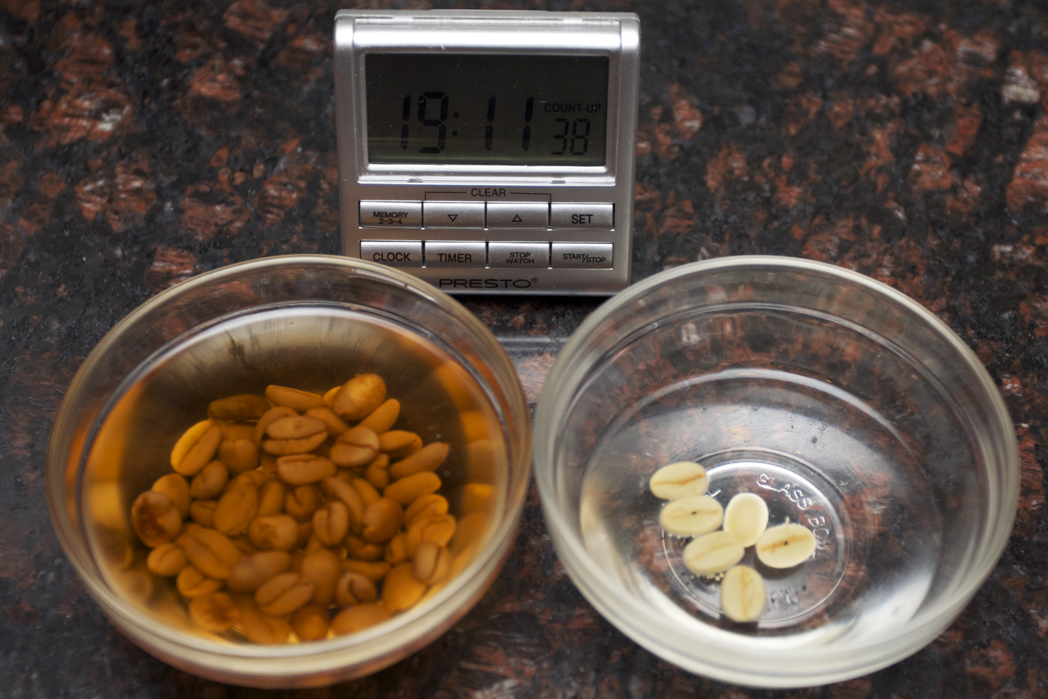
Near the end of the soaking period, I prepared the market pack by half-filling each cell with coarse vermiculite and then watered the vermiculite to get it moist before adding the seeds. Then I placed each seed in its own cell with its flat-side down.
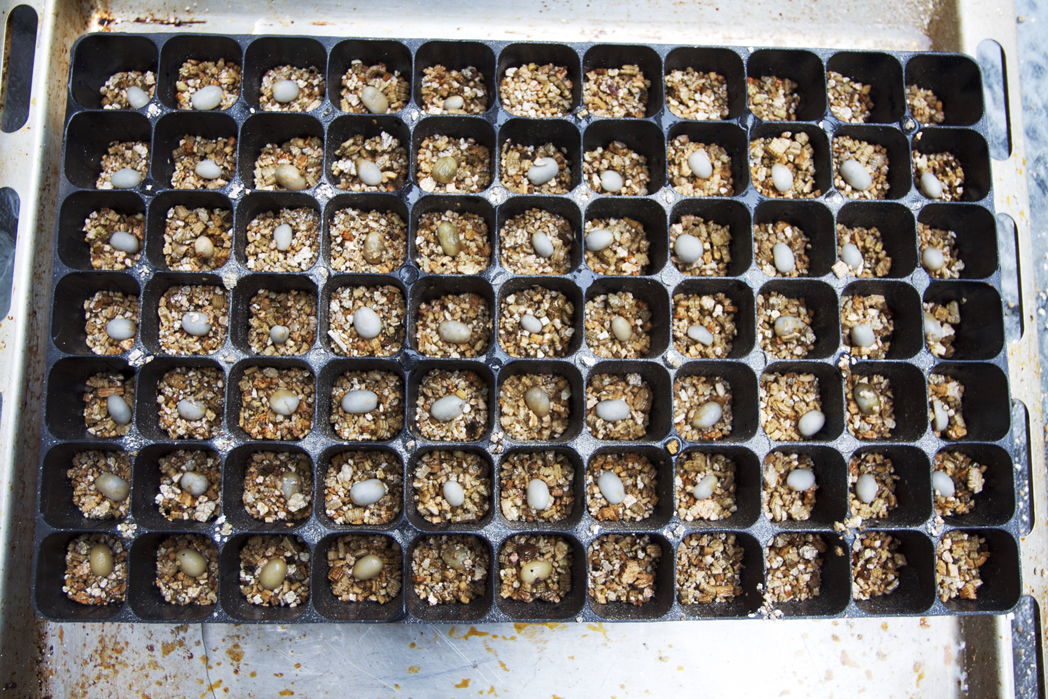
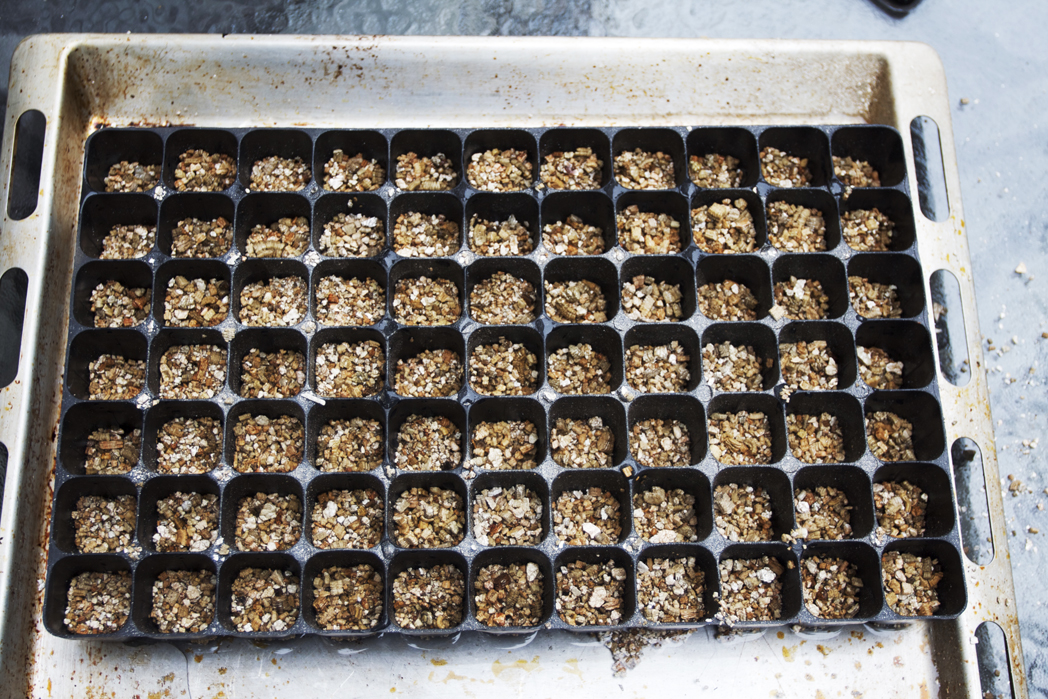
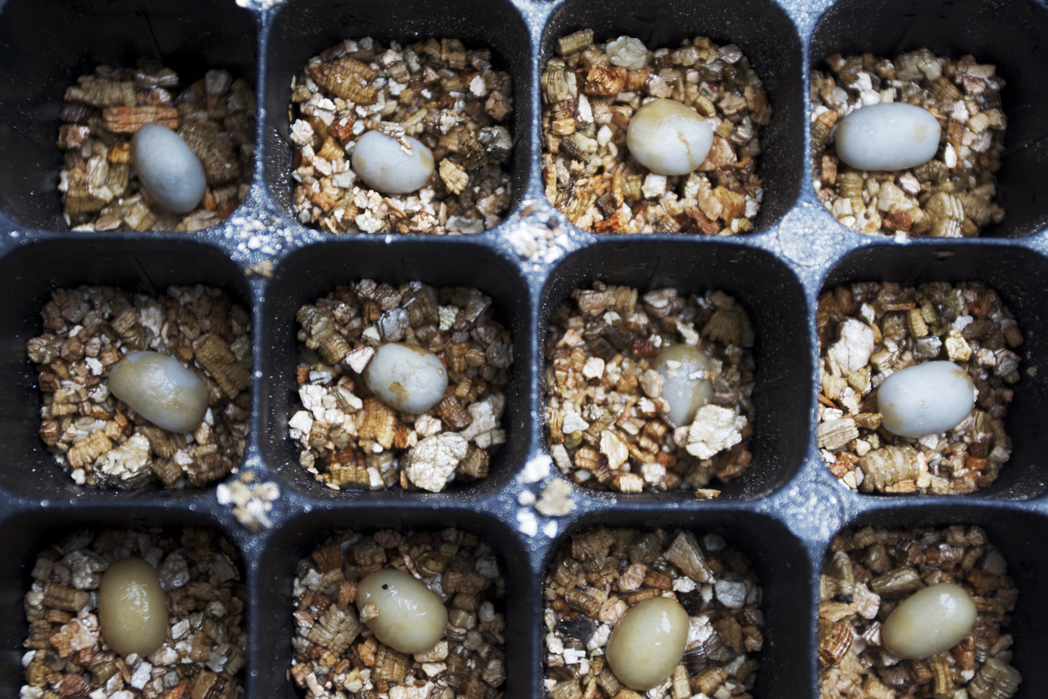
Once all seeds are placed, fill the cells with vermiculite and lightly moisten the cells again and set the market pack aside where you will see it every day. At this point you do not need any sunlight — in fact you do not want it. Every day add a little water to the cells to keep the vermiculite moist. The market pack I bought has a large hole in the bottom of each cell, to drain water. While I am away for multiple days, I place the market pack in a sink with water very slowly dripping from the faucet into the tray so the cells can soak it up from the bottom as needed.
Germinating coffee seeds are very sensitive to water stress. In case of excessive draught the seeds die, but if the soil is too wet the seeds may rot and young seedlings can be killed by damping-off. The soil of the germination beds should never be allowed to dry out completely2.
On day 51 I saw the first disturbance of vermiculite and it was one of the second set of seeds — the freshest set. The first visible part of the seedling is the hypocotyl arching up, slowly pulling the cotyledon (the seed) out of the soil. This is called an epigeous germination*.
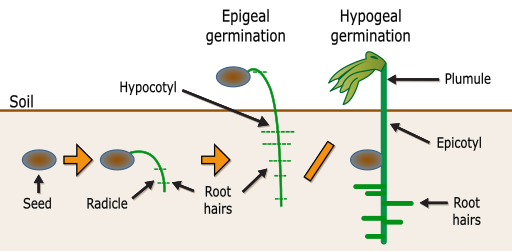
By Germination.svg: Germinacion.png: Kat1992 derivative work: Begoon derivative work: Begoon (This file was derived from Germination.svg:)
[CC BY-SA 3.0 (https://creativecommons.org/licenses/by-sa/3.0)], via Wikimedia Commons

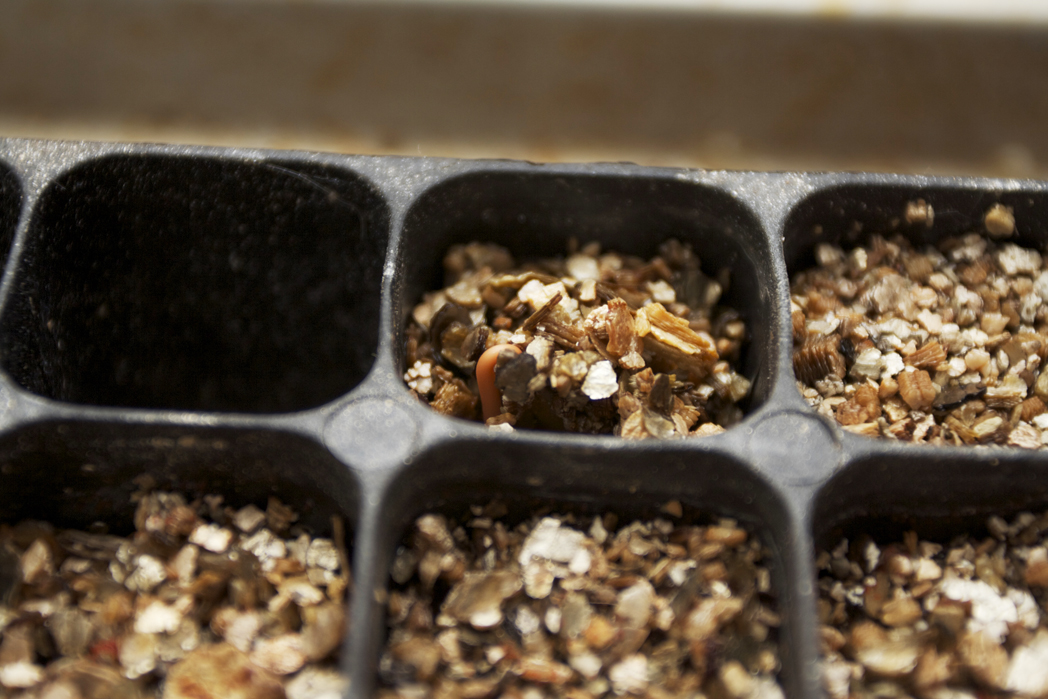
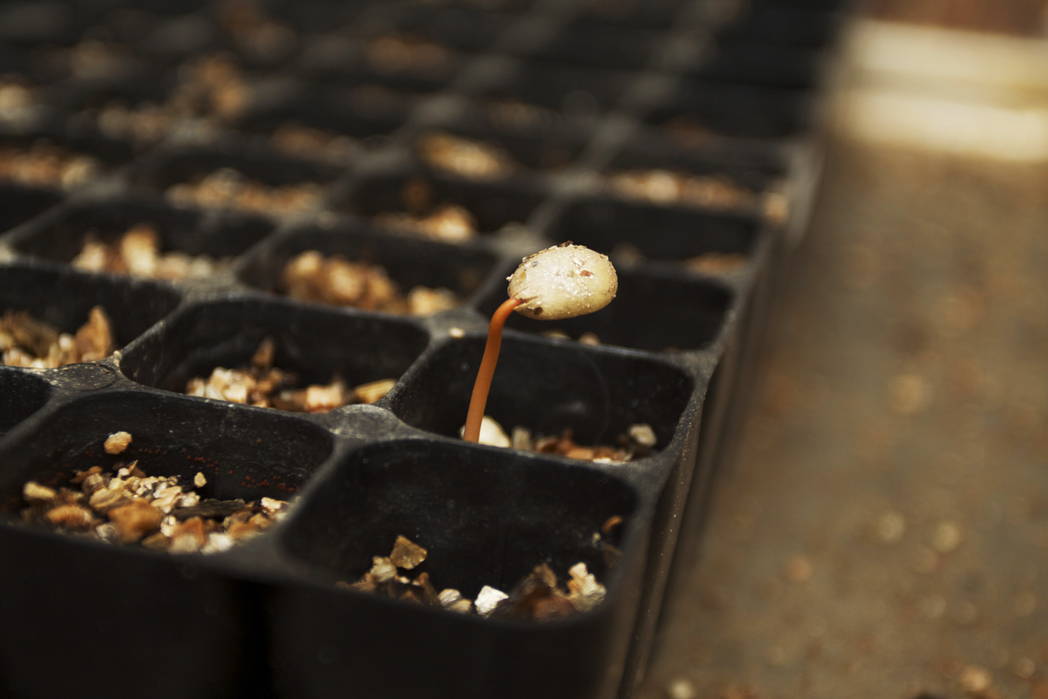
The first part of the seedling to emerge from the soil is an elbow formed by the hypocotyl. As the hypocotyl grows and lengthens, it pulls, rather than pushes the cotyledon out of the vermiculite. Once the cotyledon is above the vermiculite, the hypocotyl will straighten and then begin to push the cotyledon further.
By day 57 the cotyledon has completely emerged and the hypocotyl has further straightened and grown to a length of 2.2cm. By day 59 it was 3cm tall.
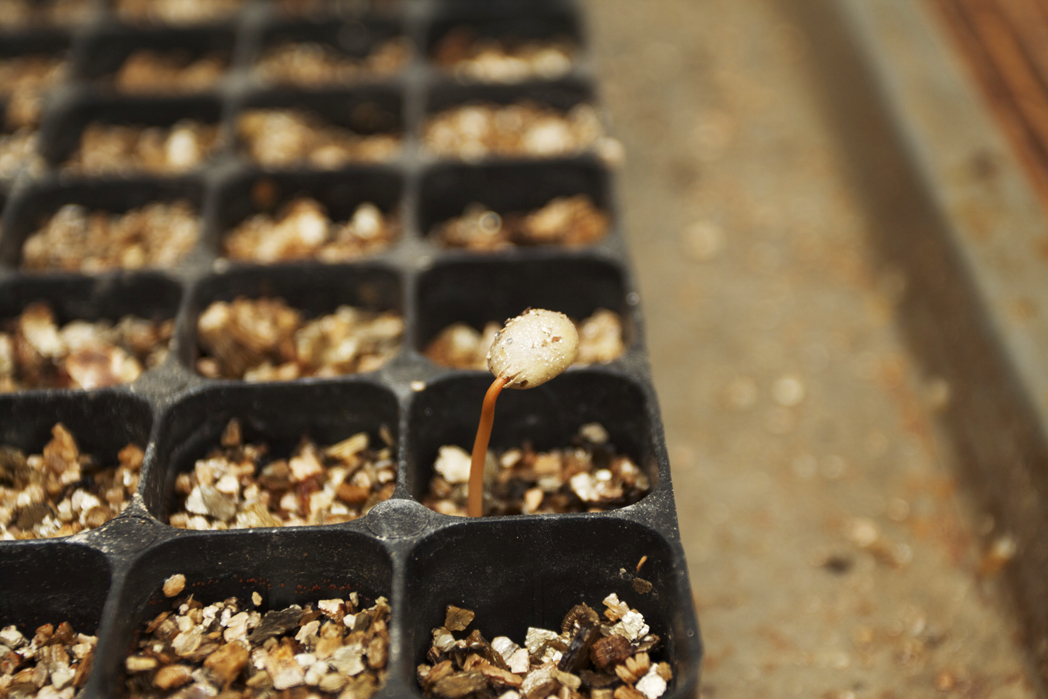
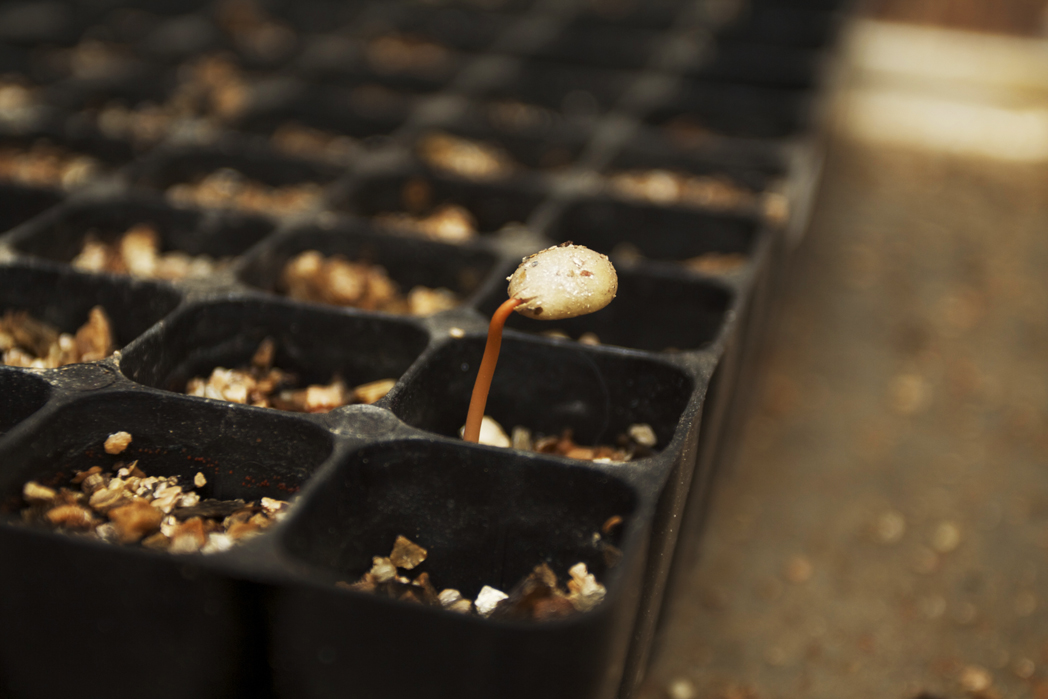

On day 58 a second seedling from the second set, a.k.a. the freshest set, emerged. The fresher seeds certainly have the odds in their favor. Research 3 has shown that seeds with a moisture content of 41% or more have much more germinative energy than those of lower moisture content. The processed seeds in the first set had a moisture content of roughly 13%. I was not able to get a reading from the second, fresher set of seeds, unfortunately.
Larger pictures of these trees can be found on my Flickr page.
Update 4/7/15:
Three of the seedlings are showing signs of necrosis near the cotyledon. I haven’t been able to tend to them daily due to travel obligations. That they made it this far is amazing.
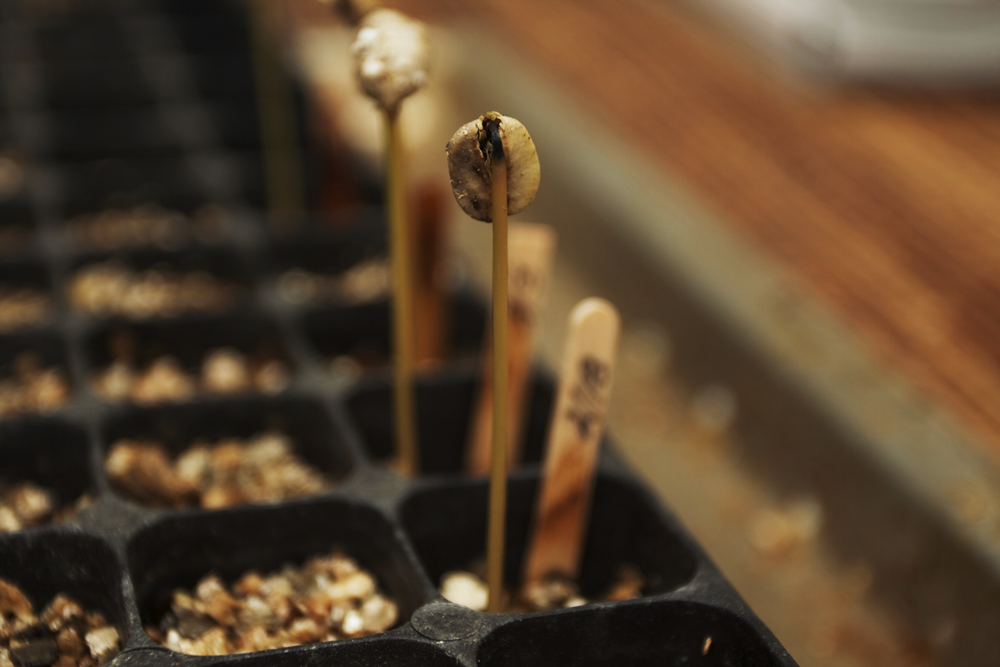
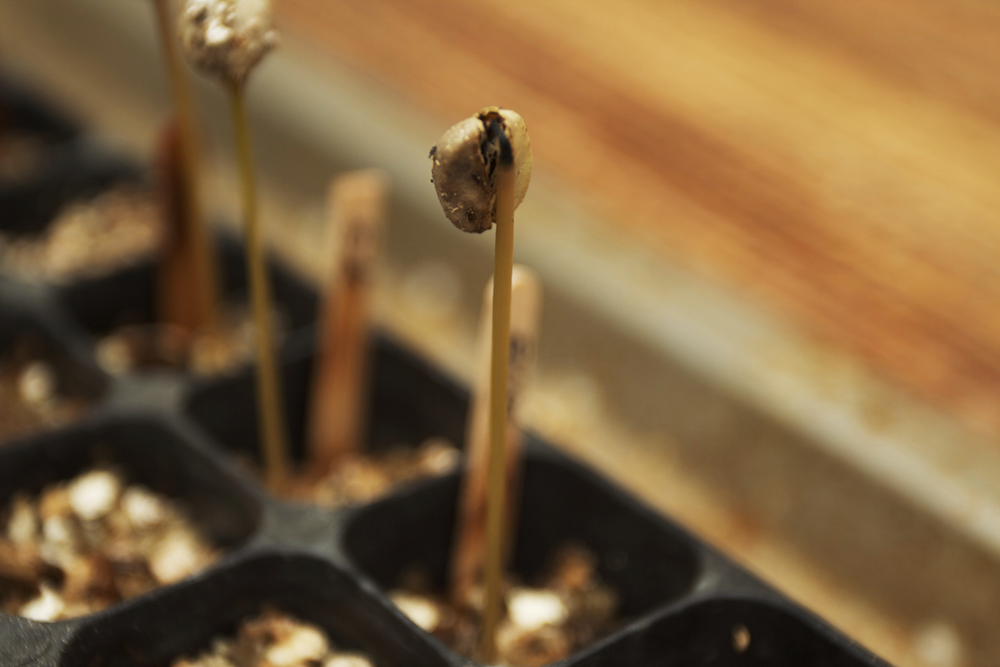
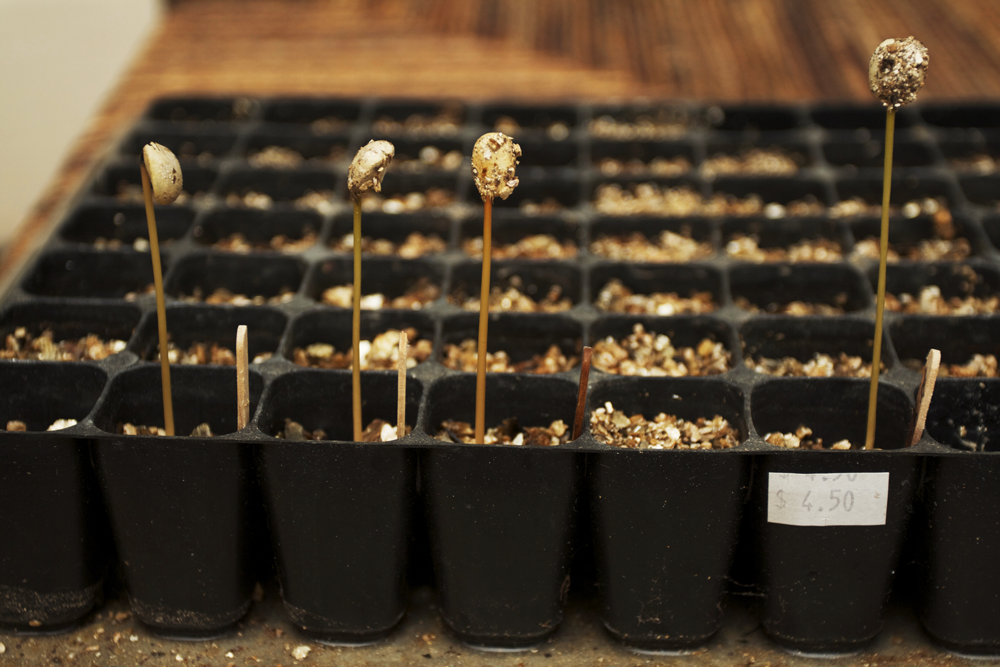
Update 5/2/12
I uprooted one of the dying seedings to take a look at the roots.

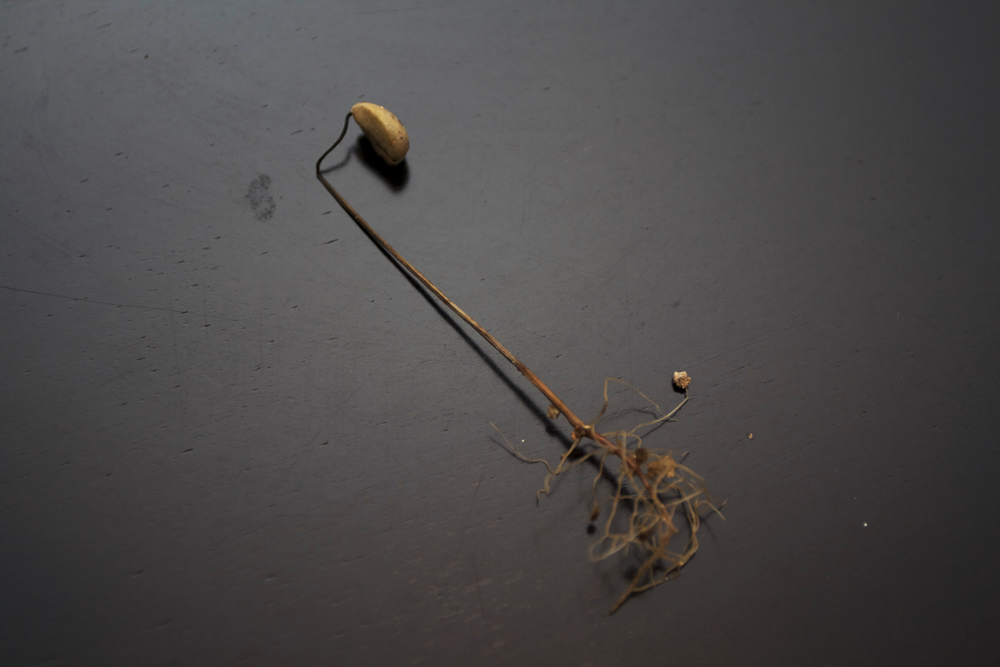
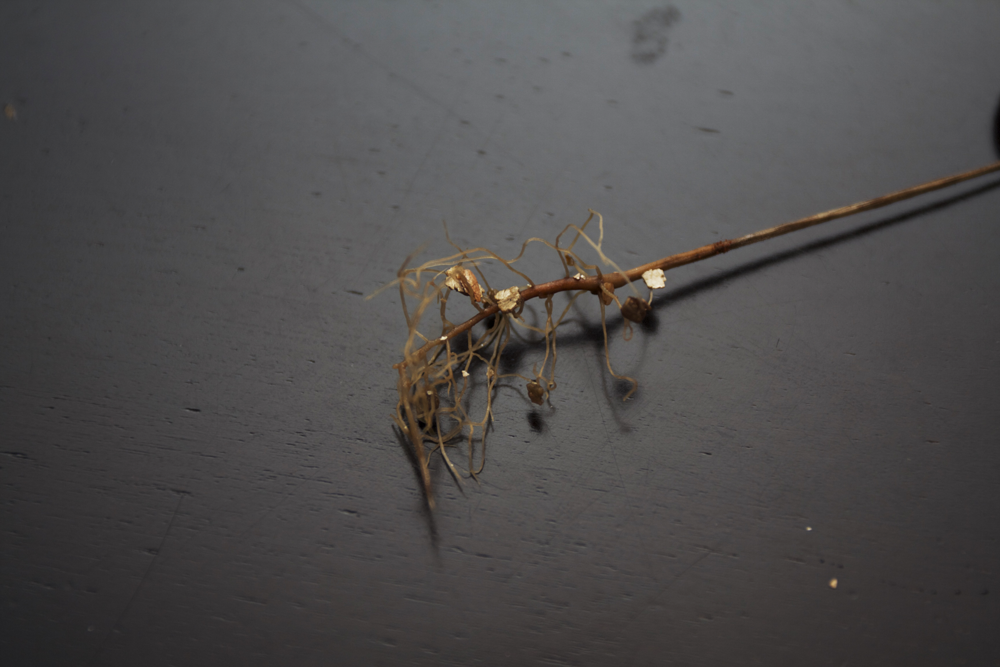
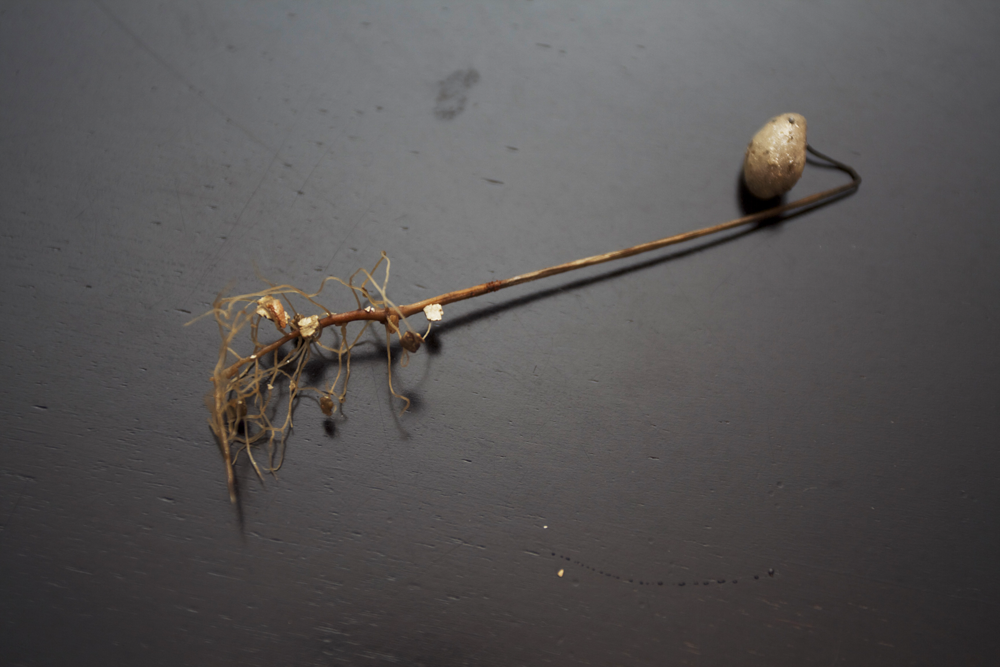
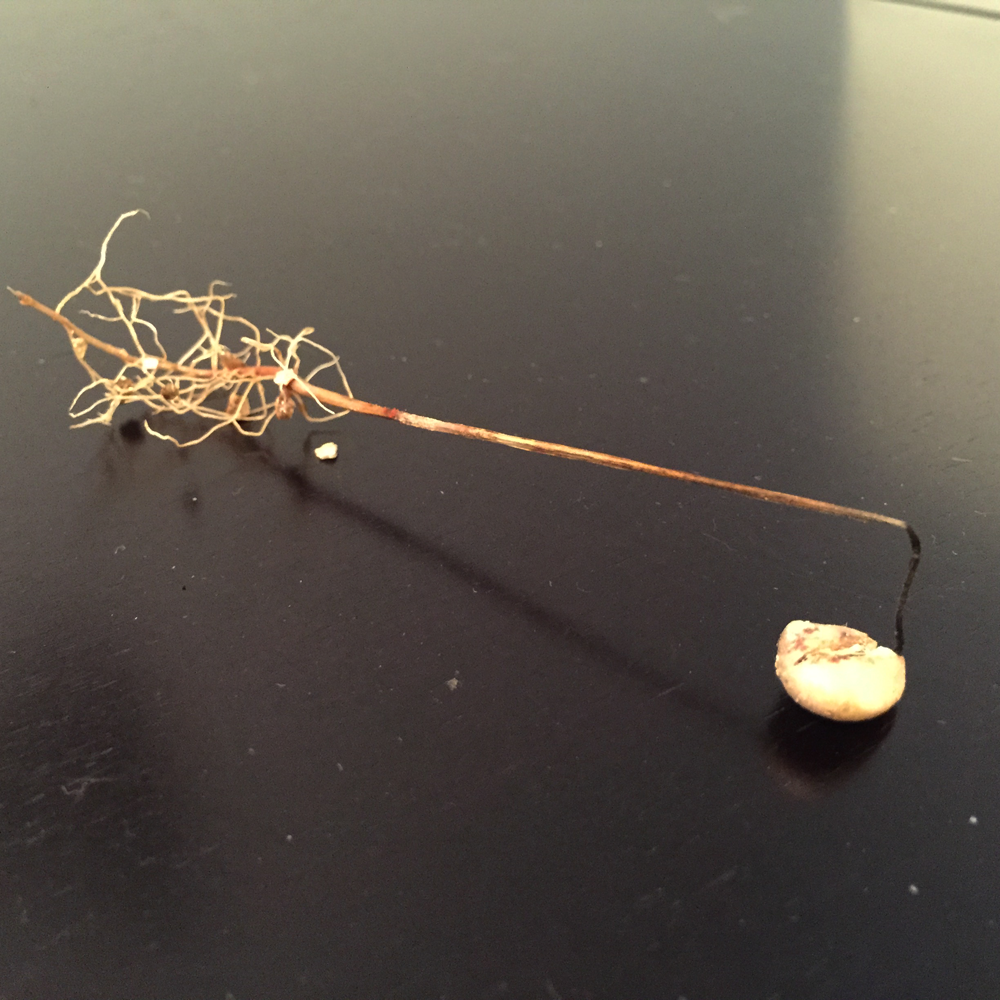
The one survivor of the bunch is starting to show the tips of green leaves:
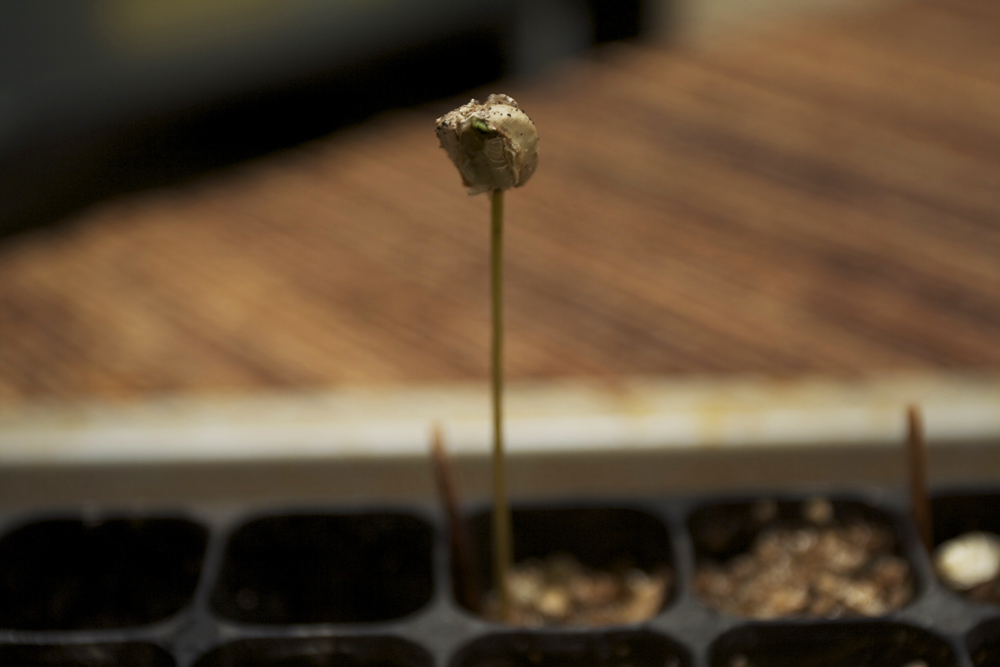
Update 7/1/15:
Green leaves are becoming more apparent. Hang in there little guy!
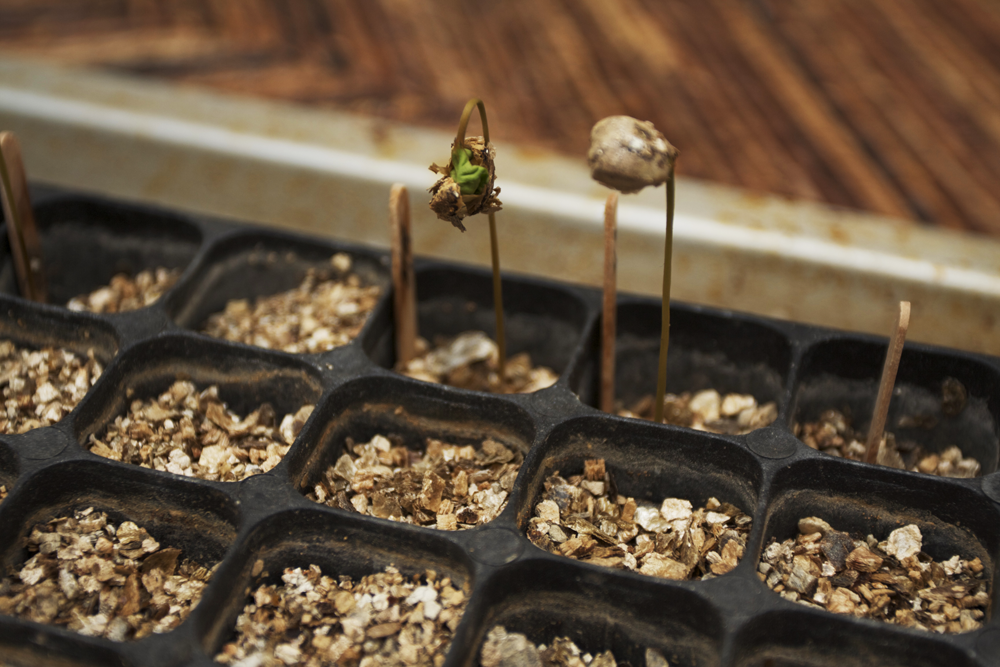
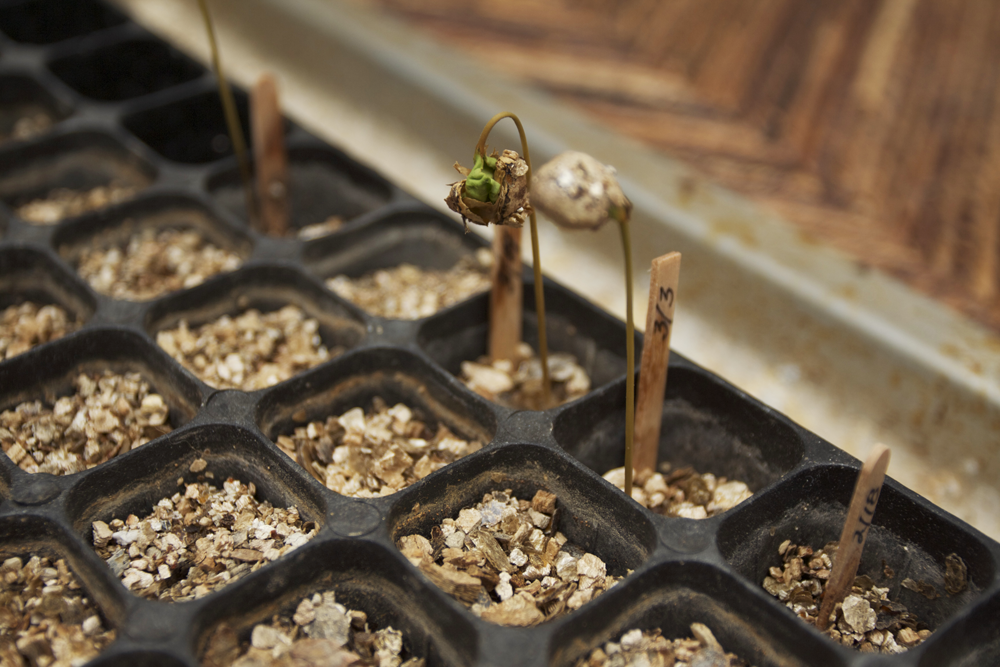
Update 8/1/15:
All of the seedlings have died. I’m sure they died of neglect; not enough water. Frequent travel prevented me from tending to the little guys. I’ll have to try again when I can give them the attention they need.
1. https://plantpropagation.org/imbibition-process/↩
2. Wintgens, Coffee: Growing, Processing, Sustainable Production, Wiley-VCH, 2012, p. 99.↩
3. Clifford and Willson, Coffee: Botany, Biochemistry and Production Of Beans And Beverage, The AVI Publishing Company, Inc., 1985, p. 159.↩
